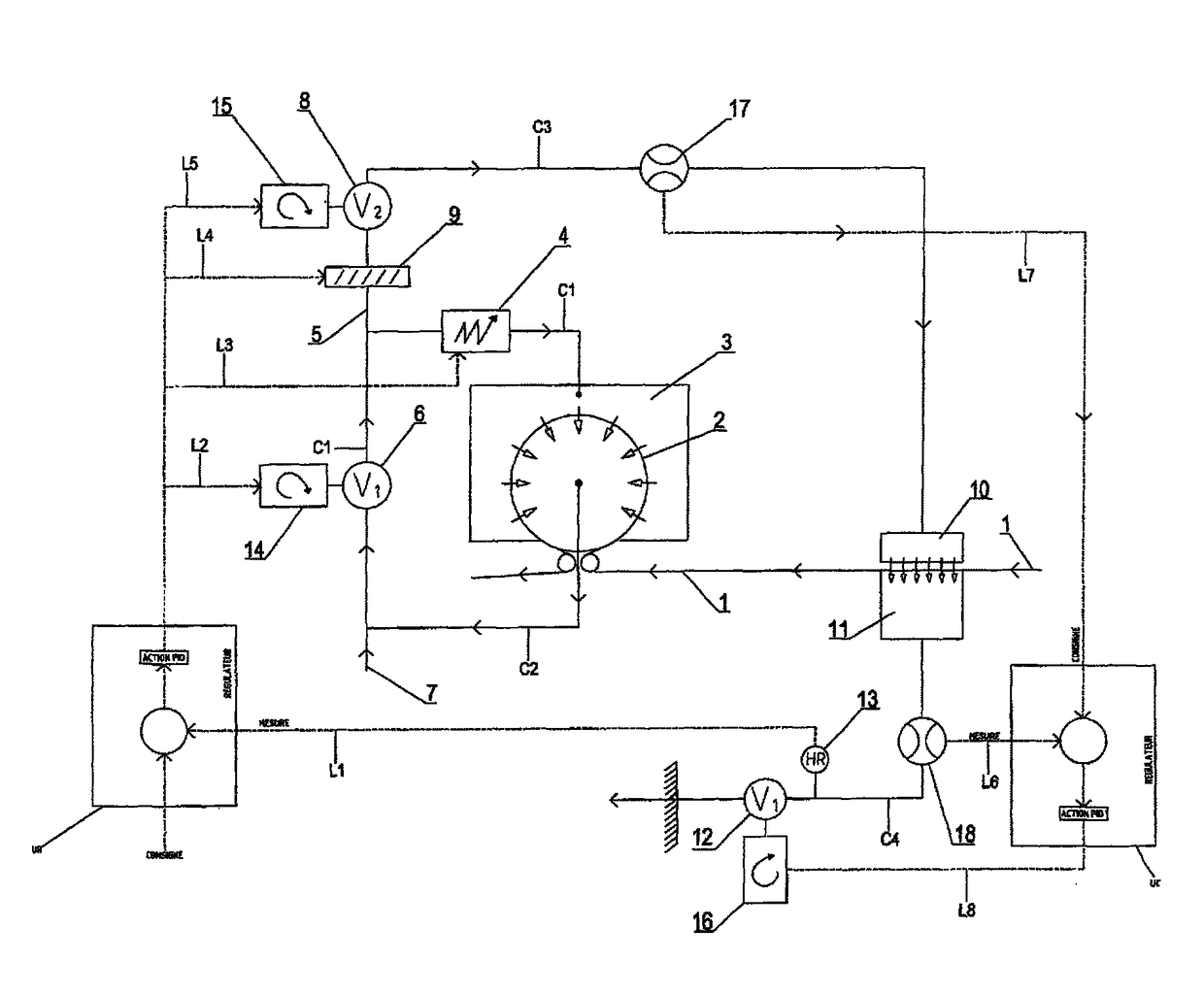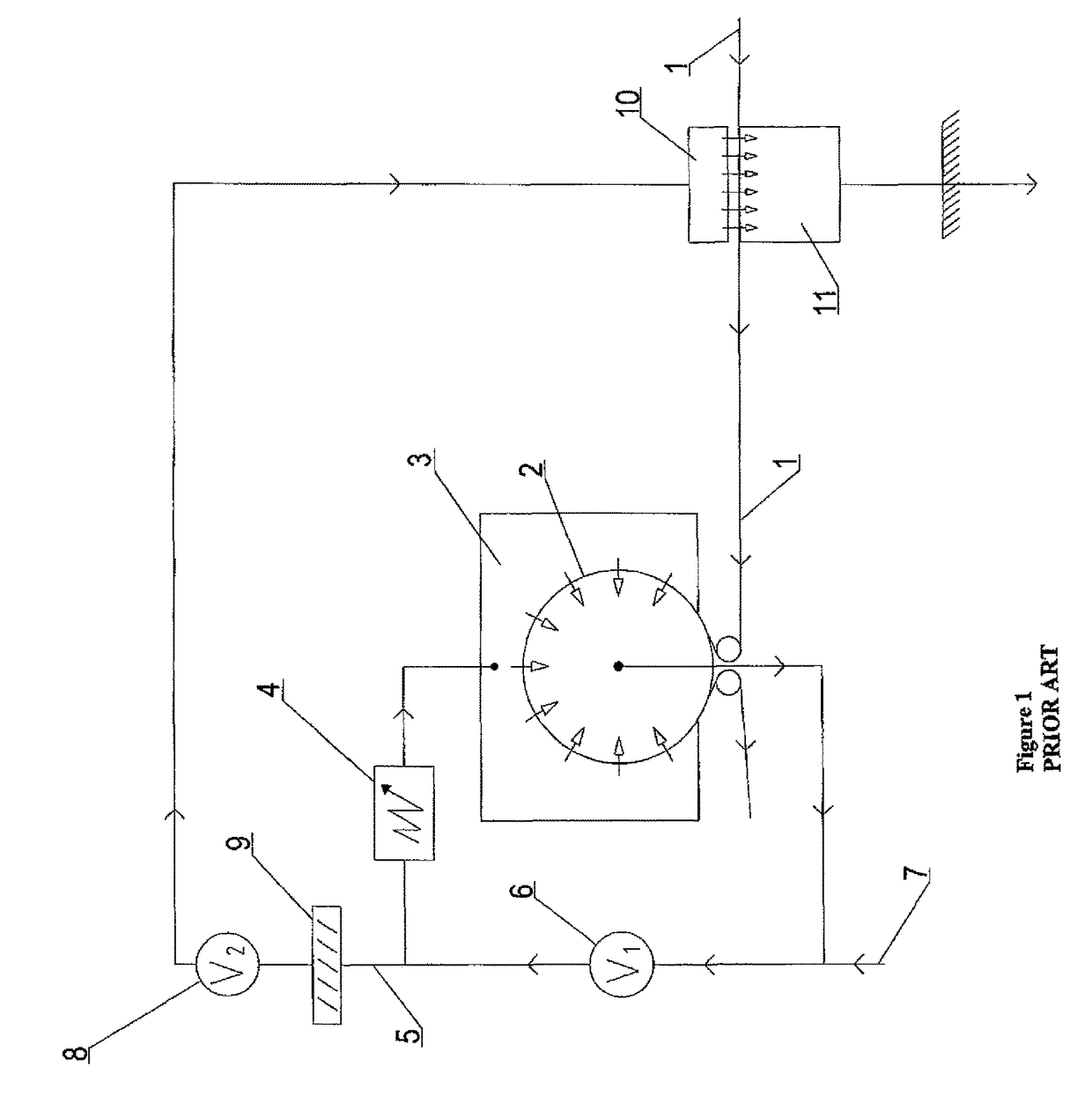Method and installation for drying a damp web
a technology of damp webs and installation methods, which is applied in drying, light and heating equipment, furnace types, etc., can solve the problems of rewetting of webs and achieve the effect of preventing their correct functioning, reducing the amount of energy needed to dry the product, and avoiding rewetting of webs
- Summary
- Abstract
- Description
- Claims
- Application Information
AI Technical Summary
Benefits of technology
Problems solved by technology
Method used
Image
Examples
examples
[0088]Example of production without the system according to the invention (corresponds to the configuration described for FIG. 2):
[0089]A web of 45 gsm 50% Viscose 50% PET to 220 m / min is produced with a machine width of 3500 mm.
[0090]4 injectors are used for bonding the web at pressures of 50-80-120-120 bars with strips of type 2J14-2J14-2J14-1J7 Strip 2J14=2 rows, diameter of the holes=120 μm, centre-to-centre of holes=1.4 mm
[0091]Strip 1J7=1 row, diameter of the holes=120 μm, centre-to-centre of holes=0.7 mm
[0092]The wet web then passes onto a dewatering conveyor by vacuum provided with:[0093]1 low vacuum dewatering box: slot width=10 mm, vacuum=−100 mbar[0094]1 high vacuum dewatering box: slot width=8 mm, vacuum=−400 mbar
[0095]The web of the conveyor has a permeability of about 800 cfm.
[0096]The drying box (11), fed from above by the diffusion box (10), is integrated into said conveyor, downstream of the 2 dewatering boxes. Said drying box has a slot width of 600 mm.
[0097]Just u...
PUM
| Property | Measurement | Unit |
|---|---|---|
| temperature | aaaaa | aaaaa |
| temperature | aaaaa | aaaaa |
| temperature | aaaaa | aaaaa |
Abstract
Description
Claims
Application Information
 Login to view more
Login to view more - R&D Engineer
- R&D Manager
- IP Professional
- Industry Leading Data Capabilities
- Powerful AI technology
- Patent DNA Extraction
Browse by: Latest US Patents, China's latest patents, Technical Efficacy Thesaurus, Application Domain, Technology Topic.
© 2024 PatSnap. All rights reserved.Legal|Privacy policy|Modern Slavery Act Transparency Statement|Sitemap



